Summer Shrub Pruning Tips for Healthy Richmond Gardens
Ready to revitalize your garden but not sure where to start? Our expert team can help!
Request a Free Quote TodayQuick Guide to Summer Shrub Pruning in Richmond
- Prune shrubs that bloom on new wood (Potentilla, panicle Hydrangeas) in summer for shaping and deadheading
- Wait until after flowering to prune spring-blooming shrubs like Lilacs and Forsythia
- Avoid pruning during heat waves or drought conditions
- Use clean, sharp tools and make proper cuts 1/4 inch above buds at a slight angle
- Practice eco-friendly disposal by composting pruned materials when possible
Introduction: Keeping Your Richmond Garden Gorgeous This Summer
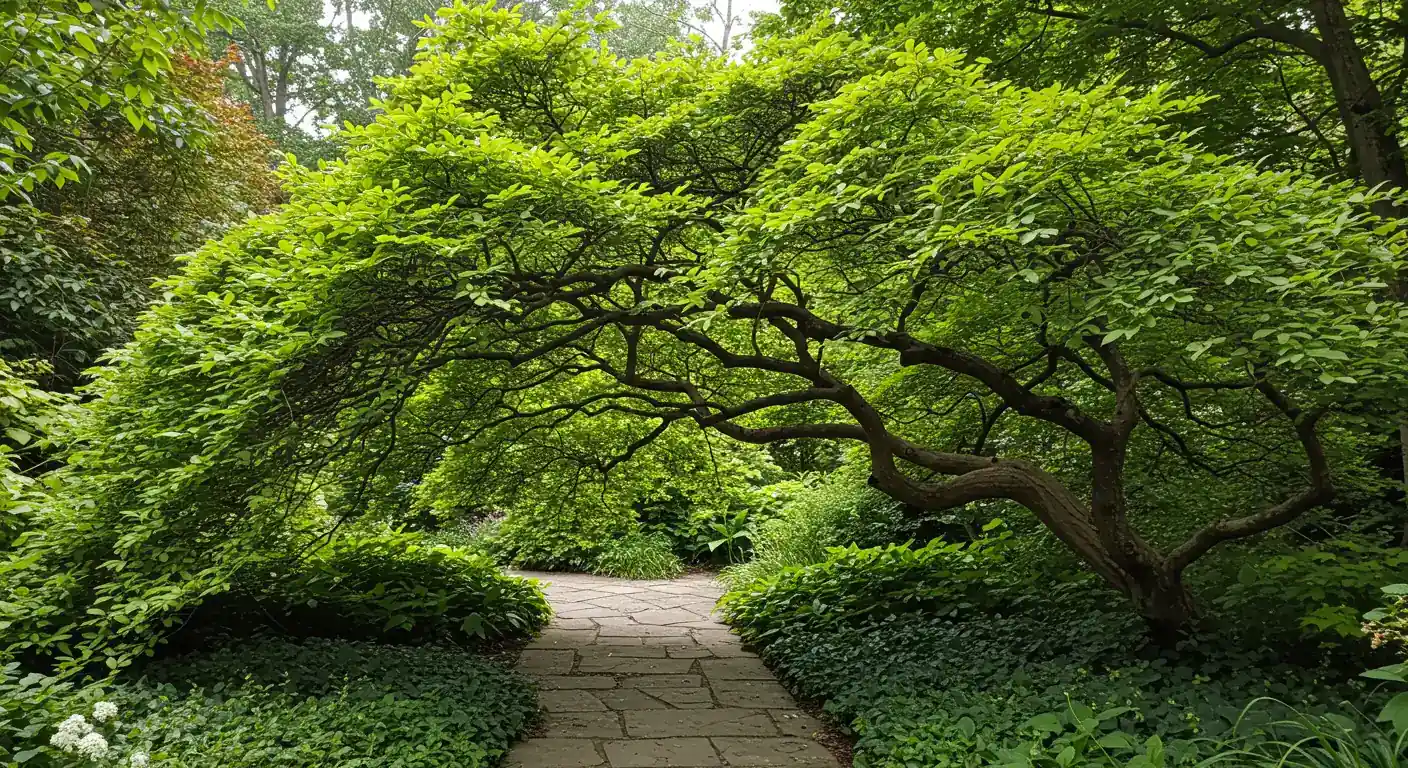
Well hello there, fellow Richmond green thumbs! Summer has arrived in the Ottawa region, bringing sunshine, barbecues, and… maybe some slightly unruly behaviour from our leafy garden companions? If you’ve stepped outside lately and thought your shrubs were auditioning for a jungle movie, you’re not alone. Keeping that landscape looking *chef’s kiss* gorgeous through our unique blend of summer heat and occasional downpours can feel like a workout sometimes. Your neighbours over in Manotick or Greely are likely nodding along right now!
But fear not! Before you declare war on those enthusiastic branches taking over your front path, let’s talk about a secret weapon in your summer gardening toolkit: strategic pruning. Yes, summer is actually a great time for a little snip here and there on many types of shrubs. Think of it less like a chore and more like giving your plants a light summer trim to keep them healthy, happy, and playing nicely with the rest of your yard. It’s key to maintaining that beautiful curb appeal we all love. Ready to learn how to finesse your foliage? Let’s dive in!
Why Bother with Summer Pruning? More Than Just a Tidy-Up!
Okay, let’s talk pruning – in summer! It might sound a bit odd, like wearing a winter coat to the beach, but trust us, summer pruning is more than just giving your shrubs a quick haircut to appease the neighbours. For many plants here in the Ottawa area, including Richmond and surrounding spots like Barrhaven, a little strategic snipping now pays off big time. Think of it less as a chore and more as a spa day for your greenery.
So, why bother?
- Boost Plant Health: This is a big one, especially with Ottawa’s sometimes humid summers. Opening up the canopy of a dense shrub allows for better air circulation. Why does that matter? Better airflow helps prevent nasty fungal diseases that love damp, crowded conditions. Removing any dead, diseased, or damaged branches immediately stops problems from spreading and directs the plant’s energy toward healthy growth. Healthy plants are also better at using resources efficiently, which is great when you’re also focused on .
- Shape Up & Look Sharp: Let’s face it, curb appeal matters! Summer pruning helps maintain the desired shape and size of your shrubs. It stops that enthusiastic Forsythia from completely blocking your window or prevents rogue branches from tickling guests enjoying your outdoor space. Keeping things neat enhances the overall look of your landscape, making those even more enjoyable. It’s about guiding growth, not just hacking away.
- Encourage Future Flowers & Fruit: For certain shrubs, like some Hydrangeas or Potentilla, removing spent flowers (deadheading) encourages another round of blooms. For others, selective summer pruning can stimulate the growth that will produce next year’s flowers or fruit. You’re essentially telling the plant, “Hey, good job on those flowers, maybe make some more?”
- Direct Energy Wisely: Plants only have so much energy. Removing unwanted growth, like suckers sprouting from the base or vigorous “water sprouts” shooting straight up, redirects that energy into the parts of the plant you want to thrive – like the main structure, flowers, or fruit. A well-pruned, healthy plant often requires less intervention overall, complementing efforts like ensuring your watering system is efficient. Speaking of which, regular , just like proper pruning helps plants use that water effectively. Sometimes, sprinkler issues can undermine even the best pruning efforts, so it’s wise to .
Summer pruning isn’t about giving everything a harsh buzz cut; it’s selective and strategic. It’s a key part of overall landscape maintenance that keeps your Richmond garden healthy, beautiful, and thriving through the season. If the thought of figuring out which branches to snip feels overwhelming, remember that professional help is available through various landscaping and yard care services.
Know Your Shrub: Who Gets the Summer Snip?
Okay, let’s talk shrub specifics! It would be nice if all our leafy friends followed the same schedule, but gardening in Richmond (and really, all over Ottawa) means knowing who likes a trim now and who’s saying, “Hands off ’til next year!” Pruning the wrong shrub at the wrong time can mean accidentally snipping off next year’s flower show. Yikes! Nobody wants that disappointment.
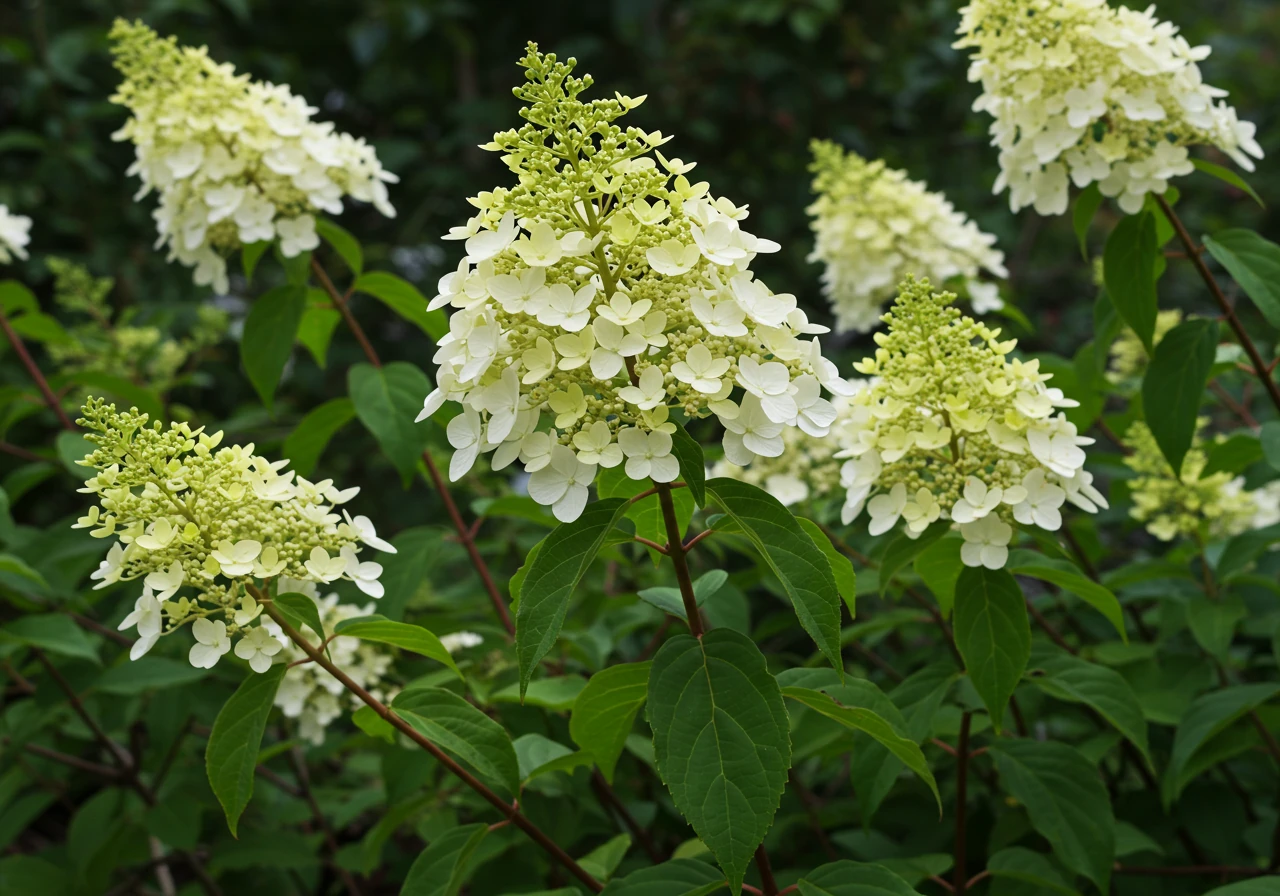
The big secret? It mostly boils down to when the shrub forms its flower buds.
Shrubs That Say “Yes!” to a Summer Snip (Bloom on New Wood):
These are the easy-going pals of the pruning world. They produce flowers on the growth they put out this summer. Pruning them now, after their first flush of blooms or just for shaping, generally won’t mess up next year’s display. In fact, for some, it encourages more flowers this season!
Who are they? Think Potentilla, summer-blooming Spirea (like ‘Goldflame’ or ‘Anthony Waterer’), smooth Hydrangeas (Hydrangea arborescens, like ‘Annabelle’), and panicle Hydrangeas (Hydrangea paniculata, like ‘Limelight’ or ‘Quick Fire’).
Why prune now?
- Shaping: Keep them from getting leggy or taking over the pathway. Maybe your Spirea is having a bit of a bad hair day? Tidy it up!
- Deadheading: Snipping off spent flowers (especially on Potentilla and Spirea) often encourages another round of blooms. Bonus!
- Rejuvenation (lightly): You can remove a few older stems if needed, but major structural pruning is often best left for late winter/early spring.
Tip: Take a walk through neighbourhoods like Barrhaven and notice those lovely Hydrangeas looking full and fantastic – they often benefit from some level of summer attention, even if it’s just removing spent blooms. Proper pruning is a key part of overall expert garden maintenance, ensuring plants look their best.
Shrubs That Say “Whoa, Not Yet!” to Summer Pruning (Bloom on Old Wood):
These shrubs are the planners. They set their flower buds for next spring or early summer shortly after they finish blooming this year. If you prune them later in the summer, fall, or winter, you’re cutting off those precious buds.
Who are they? This group includes most spring bloomers like Forsythia, Lilacs, Weigela, Rhododendrons, Azaleas, Mock Orange, and climbing Hydrangeas.
When should you prune them? The best time is right after they finish flowering in the spring. This gives them plenty of time to recover and set buds for next year.
What if they really need shaping now? If a branch is dead, diseased, or dangerously blocking something, you can remove it anytime. But for general shaping, resist the urge! Wait until next spring after the flower show. Think of those gorgeous Lilacs you might see in more established areas like Osgoode each spring – they thrive because they get pruned at the right time (or sometimes, happily, not at all!). Dealing with overgrown spring bloomers that were missed can sometimes require a more significant property clean up later on.
Shrubs that Bloom on Old Wood
These shrubs form next year’s flower buds on this year’s growth, so summer pruning can remove potential flowers.
- Lilac (Syringa)
- Forsythia
- Weigela
- Rhododendron & Azalea
- Mock Orange (Philadelphus)
- Early-blooming Spirea (e.g., ‘Bridal Wreath’)
- Bigleaf Hydrangea (Hydrangea macrophylla)
- Oakleaf Hydrangea (Hydrangea quercifolia)
- Climbing Hydrangea
- Magnolia
- Viburnum (most species)
When to prune: Immediately after flowering in spring/early summer
Shrubs that Bloom on New Wood
These shrubs produce flowers on the current season’s growth, making them suitable for summer pruning.
- Panicle Hydrangea (Hydrangea paniculata) – ‘Limelight’, ‘Quick Fire’, etc.
- Smooth Hydrangea (Hydrangea arborescens) – ‘Annabelle’, etc.
- Potentilla (Cinquefoil)
- Butterfly Bush (Buddleia)
- Rose of Sharon (Hibiscus syriacus)
- Summer-blooming Spirea (e.g., ‘Goldflame’, ‘Anthony Waterer’)
- Caryopteris (Blue Mist Shrub)
- Russian Sage
- Shrub Roses (many varieties)
When to prune: Late winter/early spring for major pruning, summer for light shaping and deadheading
Evergreen Shrubs
These non-flowering or inconspicuously flowering shrubs follow different pruning rules.
- Yew (Taxus)
- Boxwood (Buxus)
- Juniper
- Cedar (Thuja)
- Euonymus (evergreen varieties)
- Holly (Ilex)
- Pine (dwarf varieties)
- Spruce (dwarf varieties)
When to prune: Generally best in late spring or early summer as new growth begins. Light shaping can be done in summer, but avoid pruning in late fall/early winter.
Feeling unsure? Identifying shrubs can sometimes feel like detective work. If you’re staring at a leafy suspect and just aren’t sure, it’s always okay to wait or seek advice. Trying to tidy up after pruning, especially with larger shrubs, can also generate a fair bit of debris. If you find yourself needing help with the aftermath, a Barrhaven yard cleanup service might be just the ticket. For broader landscaping needs or if you’d rather leave the snipping to the pros, exploring comprehensive landscaping and yard care services is a great option. Still scratching your head about a particular plant in your Richmond garden? Don’t hesitate to contact us – we’re happy to help point you in the right direction!
Let the professionals handle your garden maintenance needs!
Get Professional Help With Your Garden MaintenanceSnip Snip Hooray! Summer Pruning Techniques & Tools
Okay, time to roll up those sleeves (or put on some sturdy gardening gloves!) and talk about how to actually do this summer pruning thing. It’s not about going Edward Scissorhands on your greenery; it’s about making smart, intentional cuts. Let’s break down the main techniques and the tools you’ll need.
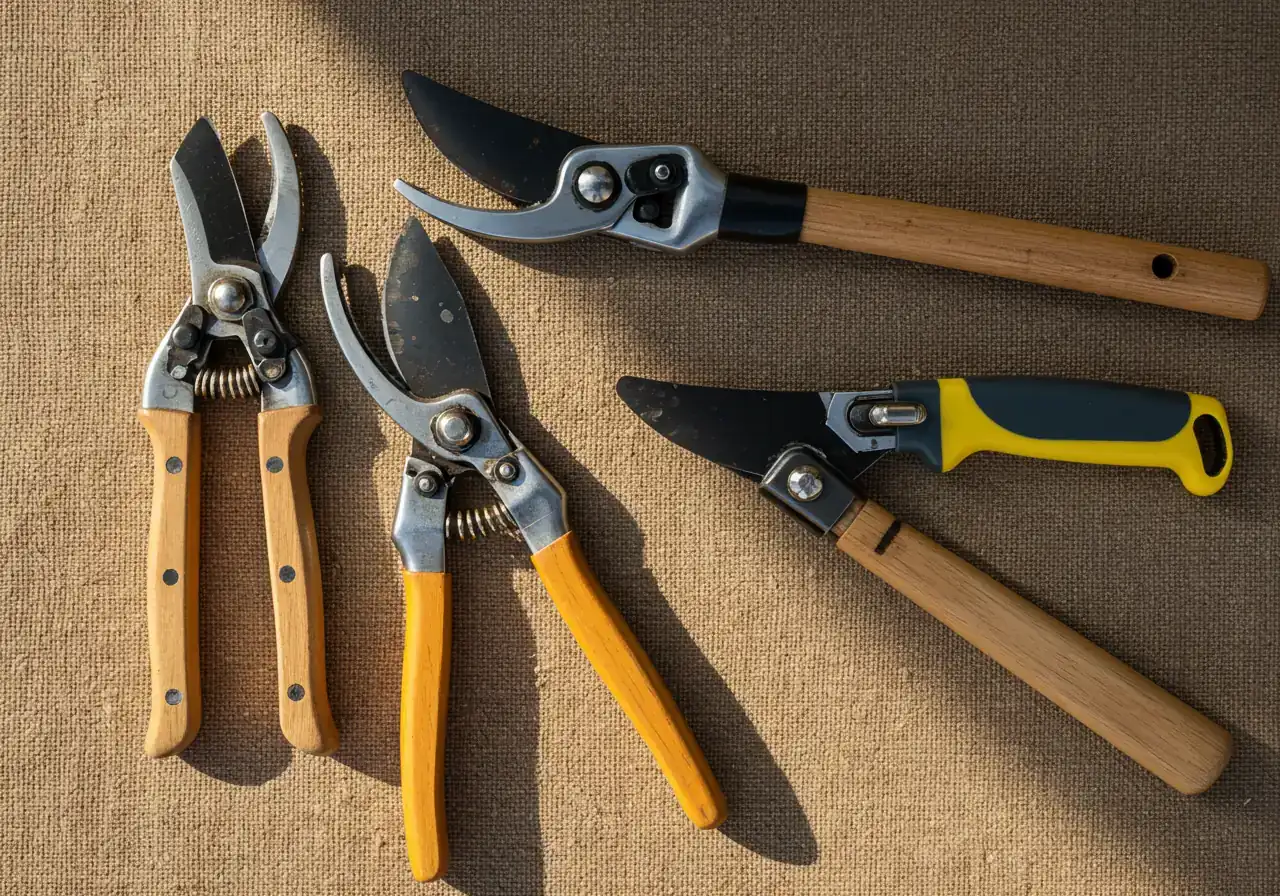
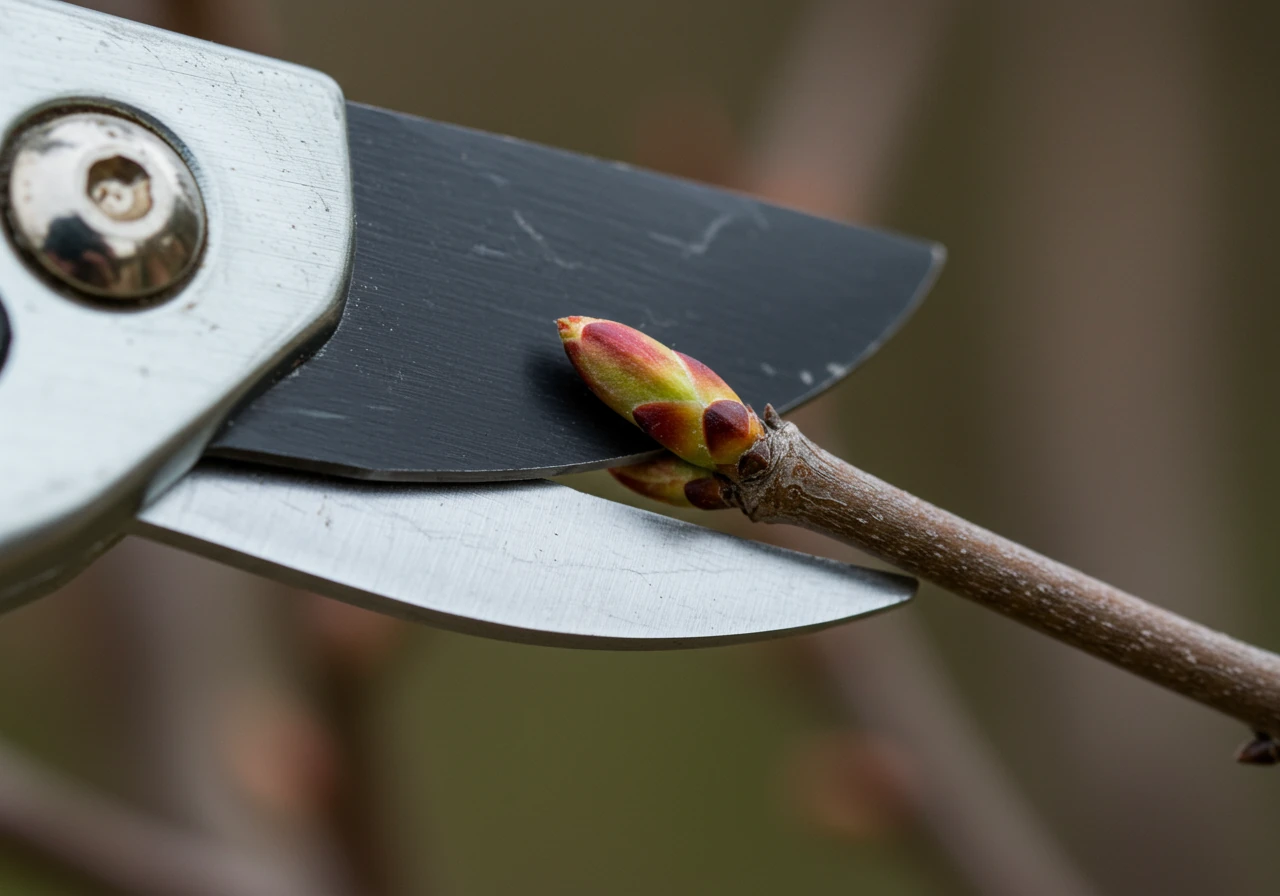
The “How-To” of Summer Snips: Thinning, Heading, & Deadheading
Think of these as your three main moves in the summer pruning dance:
- Thinning: This is like decluttering your shrub. You remove entire branches right back to their point of origin – either where they meet a larger branch, the main trunk, or sometimes right down to the ground.
- Why do it? Thinning opens up the plant, improving air circulation (bye-bye, potential diseases!) and letting more sunlight reach the inner leaves. It reduces density without drastically changing the plant’s overall size.
- Summer Use: Great for tackling crowded growth or removing weak, crossing, or unwanted stems.
- Heading (or Heading Back): This involves cutting back the end of a branch to a healthy bud or side branch.
- Why do it? Heading encourages bushier growth below the cut because buds lower down the stem are stimulated to grow. It’s also used to control size or redirect growth.
- Summer Use: Use sparingly in summer, mainly for shaping or controlling overly long shoots on shrubs that bloom on new wood. Avoid heavy heading on most plants now, as it can stimulate a lot of late-season growth that might not harden off before winter in our Ottawa climate.
- Deadheading: Simply put, this is removing spent or faded flowers.
- Why do it? It makes plants look tidier and, for many repeat bloomers (like those Potentilla!), encourages them to produce more flowers instead of putting energy into seed production.
- Summer Use: A constant summer task for many flowering shrubs and perennials!
Making the Cut: A Quick Guide
When removing a branch or stem, don’t just hack away!
- Step 1: Locate a healthy bud facing the direction you want new growth to go, OR find the branch collar (the slightly swollen area where a branch joins a larger stem).
- Step 2: Using clean, sharp pruners, make a clean cut about 1/4 inch above the bud, angled slightly away from it (so water runs off). If removing a whole branch, cut just outside the branch collar – don’t cut flush with the trunk and don’t leave a long stub.
Deadheading Simplified
- Step 1: Identify the spent flower(s).
- Step 2: For single flowers on a stem (like some roses or daylilies), snip the stem back to the nearest set of healthy leaves or a main stem. For flowers in clusters (like hydrangeas or spirea), snip off the entire faded cluster just above the next set of leaves or buds.
Your Pruning Toolkit: Sharp & Clean is Key!
You don’t need a massive arsenal, but having the right clean and sharp tools makes the job easier and healthier for your plants. Dull blades crush stems, creating ragged wounds that invite pests and diseases. Dirty blades can spread problems from one plant to another.
- Hand Pruners (Secateurs): Your go-to for smaller stems (usually up to 1/2 or 3/4 inch). Bypass pruners (with one sharp blade bypassing a thicker base) make cleaner cuts than anvil types.
- Loppers: Like hand pruners but with long handles for more leverage on thicker branches (up to 1.5 inches or so).
- Hedging Shears: Best for formal hedges, used for trimming the surface evenly. Less useful for selective shrub pruning.
- Pruning Saw: For branches too thick for loppers.
Keep rubbing alcohol or disinfectant wipes handy to clean your blades between plants, especially if you suspect disease. You can find these tools at most local garden centers and hardware stores, including those near Nepean.
Safety First, Folks!
- Wear sturdy gloves to protect your hands.
- Eye protection is a must – stray branches can whip back unexpectedly!
- If using a ladder, ensure it’s stable and follow proper safety procedures.
- Be aware of your surroundings – pets, kids, overhead wires.
Proper pruning is a cornerstone of good expert garden maintenance. It ensures your shrubs stay healthy and look great, complementing other aspects of yard care, like maintaining a lush lawn through dedicated lawn care services. The debris from pruning, especially larger jobs perhaps out near Metcalfe, can pile up; if you need assistance with removal, considering a Metcalf property cleanup service or a general Ottawa garden clean up service can handle the mess efficiently. If you’re thinking about professional help for pruning or other services, rest assured we handle your inquiries and property details with care (you can review our commitment in our Privacy Policy). Happy snipping!
Timing is Everything: Ottawa’s Summer Pruning Calendar & Considerations
Okay, so we know why we might prune in summer and which shrubs might get the snip. But when exactly should you break out the pruners here in the Ottawa area? Timing really is key, especially with our delightfully unpredictable summer weather! Think of it like trying to plan a picnic – you wouldn’t go during a thunderstorm, right? Same idea applies to pruning.
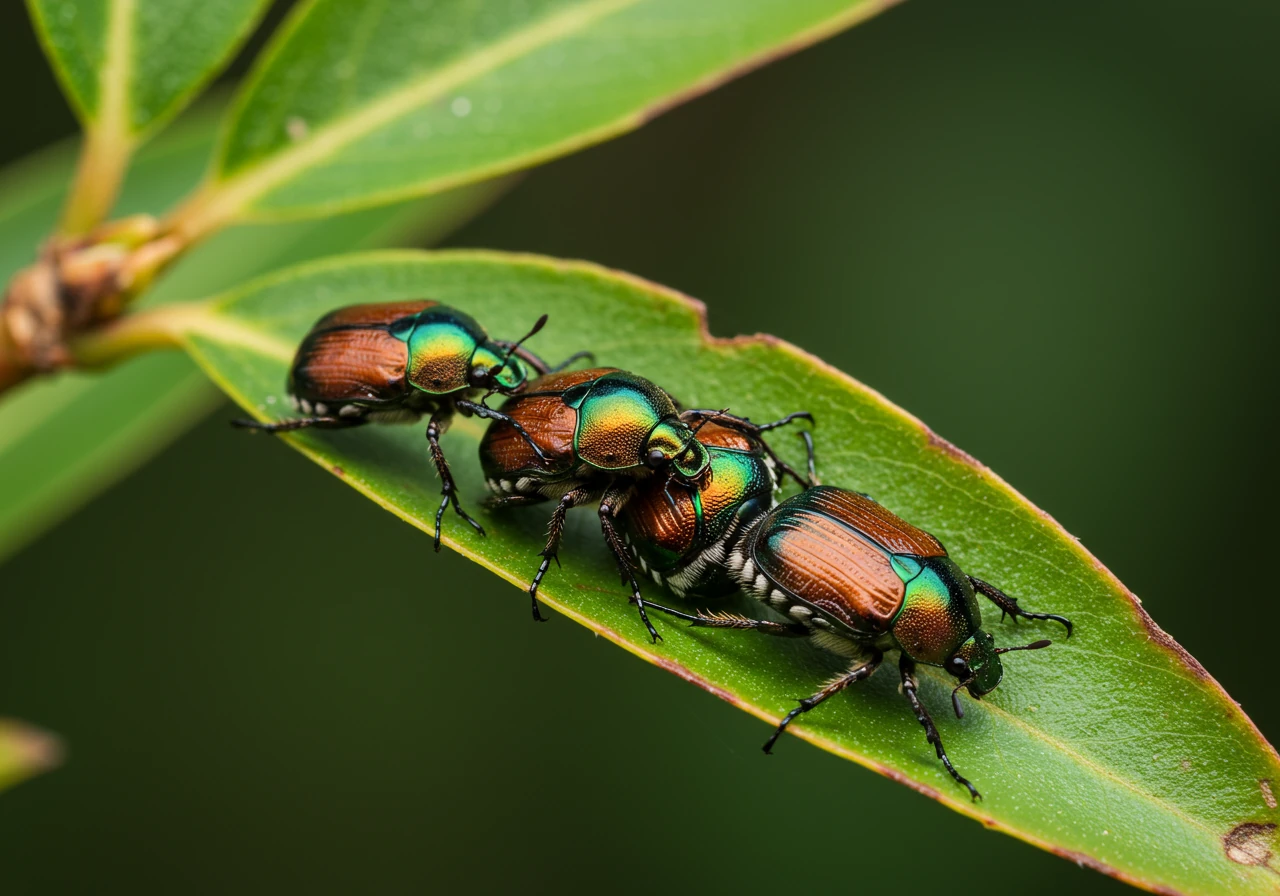
Ottawa’s Summer Pruning Sweet Spots (and Sour Patches)
Generally, for those shrubs that bloom on new wood (like Potentilla or Panicle Hydrangeas), you have a wider window through summer for light shaping or deadheading. For spring bloomers pruned after flowering (like Lilacs), that window is usually late spring/early summer.
However, our local Ottawa conditions throw in a few curveballs:
- Heat Waves & Drought: When the temperature soars and the rain gauge is dusty, your plants are already stressed. Pruning adds another layer of stress because the plant has to divert energy to heal the cuts. It’s best to avoid pruning during intense heat waves or prolonged dry spells. Wait for cooler temperatures or after a good rain. Healthy soil helps plants bounce back faster, which is a principle we follow even in services like expert sod installation for a lush lawn, as good soil structure supports resilience.
- Pesky Pests (Looking at You, Japanese Beetles!): Oh, those shiny beetles. They’re often most active here from late June through July and sometimes into August. Fresh pruning cuts release scents that can actually attract them. If beetles are a big problem in your yard, try to do any necessary summer pruning before their peak season or wait until later in August after their numbers start to dwindle.
- Local Microclimates: Ottawa’s a big place! Conditions in Richmond might be slightly different from Kars or even out towards Metcalfe on the same day. Areas closer to the river might be a bit more humid, while more open areas could be windier or heat up faster. Pay attention to your specific location. A week’s difference in ideal timing between neighbourhoods isn’t unusual. As locals ourselves (you can learn more on our About Us page), we definitely see these variations!
Ottawa Summer Pruning Timeline
The Bottom Line:
The best summer pruning times in Ottawa are typically:
- Right after spring bloomers finish flowering (late May/June).
- During milder periods in July and August for light shaping or deadheading of summer bloomers, actively avoiding heat waves, drought, and peak pest times.
Listen to your plants and the weather forecast! If things seem stressful, hold off. A healthy, well-maintained landscape is always the goal. Need some visual inspiration for what that looks like? Check out our gallery of beautiful Ottawa landscapes for ideas. And if pruning leaves you with more branches and debris than you bargained for, especially after tackling a bigger job perhaps out near Metcalfe, remember that help is available with services like a dedicated Metcalf property cleanup service. Deciding to get professional pruning help is easy too; just reach out, and consider this a preemptive thank you for choosing Clean Yards!
Pruning with Purpose: Eco-Friendly Practices for Your Richmond Garden
Alright, Richmond gardeners, let’s talk about pruning with a green conscience! Making those cuts isn’t just about keeping your shrubs from staging a hostile takeover of the sidewalk; it’s also a chance to be kind to Mother Earth right here in our lovely slice of Ottawa. Being eco-friendly in the garden doesn’t mean more work, just smarter work. As folks passionate about sustainable green spaces (you can read more on our About Us page), we believe mindful pruning benefits everyone – including the squirrels!
Here are a few ways to prune with purpose:
- Compost Those Cuttings: Don’t just bag up those trimmed branches and leaves for the landfill! Most healthy pruning debris is gardening gold. Smaller twigs and leaves can go straight into your Ottawa green bin – hooray for easy composting! Larger branches might need chipping first, or you can create a small brush pile in a corner of your yard (wildlife loves these!). Avoid composting diseased plant material, though, as you don’t want to spread problems. Ensuring cuttings are disposed of properly, whether via green bin or through services like a Marionville Garden Clean Up Service for larger volumes, prevents waste.
- Nature’s Disease Control: Eco-friendly pruning means less reliance on chemical sprays. How? By using those clean, sharp tools we talked about! Clean cuts heal faster, making plants less vulnerable to pests and diseases. Thinning branches to improve air circulation is also a fantastic natural way to prevent fungal issues that thrive in damp, crowded conditions – a common challenge in humid Ottawa summers.
- Think Wildlife: Our gardens in Richmond and nearby areas like Manotick are mini ecosystems. Before you snip, take a quick peek for bird nests, especially during spring and early summer. If possible, avoid major pruning during peak nesting season. Leaving some denser shrubs slightly less manicured can provide essential shelter for birds and beneficial insects year-round. They’ll thank you for it (probably with fewer aphids!).
- Water-Wise Pruning: Did you know smart pruning can help conserve water? By removing excess or unhealthy growth, you reduce the amount of foliage the plant needs to support, meaning it uses water more efficiently. This is especially helpful during dry spells. It’s a great complement to other water-saving garden practices.
Handling the aftermath of a big pruning session can sometimes be overwhelming. If you find yourself with more branches and leaves than your green bin can handle, remember that professional help like an Ottawa Yard Cleanup Service can manage the debris responsibly. Sometimes a major pruning overhaul requires a full Ottawa Property Cleanup Service to deal with the volume efficiently. Even managing waste from slightly smaller, but still significant jobs, is important, similar to needing a Metcalf Garden Clean Up Service for specific area projects. Pruning thoughtfully makes your garden healthier and greener!
Immediate Benefits
Improved plant appearance and removal of diseased material. Reduced risk of immediate pest issues through proper technique.
Short-Term Benefits (Weeks)
Better air circulation preventing fungal diseases. Reduced water needs due to balanced foliage-to-root ratio.
Mid-Term Benefits (Months)
Compost from prunings enhances soil. Wildlife utilizes brush piles for shelter. New, strategic growth improves plant structure.
Long-Term Benefits (Years)
Healthier, longer-lived plants requiring fewer chemical inputs. Established habitat for beneficial wildlife. Reduced need for major interventions.
Summer Pruning Quick Wins: Key Takeaways
Feeling a bit overwhelmed by all the pruning talk? Totally understandable! Sometimes you just need the highlights, the quick wins you can grab and run with (well, maybe walk briskly back to your garden). Think of this as your cheat sheet for keeping those shrubs in line this summer here in Ottawa, whether you’re in Richmond, Nepean, or anywhere in between. Let’s get straight to the good stuff!
Here are the essential takeaways for successful summer snipping:
- Timing is Crucial – Don’t Stress Your Plants! Remember those scorching Ottawa heat waves? Yeah, your shrubs hate pruning during those times, or when it’s super dry. Hold off on major cuts until the weather is milder. Stressed plants don’t heal well, so give them a break when they’re already working hard just to survive the heat.
- Know Who You’re Snipping: This is the golden rule! Prune spring bloomers (like Lilacs) right after they flower. For shrubs that bloom on this year’s growth (like Potentilla, many Hydrangeas), you can do light shaping or deadheading during the summer. Pruning the wrong thing at the wrong time means no flowers next year – oops!
- Use Sharp, Clean Tools for Clean Cuts: Dull blades crush stems, inviting pests and diseases. Dirty tools spread germs like gossip at a garden party. Use sharp bypass pruners for small stuff, loppers for thicker branches, and always clean your tools between plants if you suspect disease. Making cuts just outside the branch collar or above a healthy bud helps the plant heal faster. Proper aftercare matters too; ensuring good soil health and considering appropriate mulch choices and material selection can help your shrubs bounce back beautifully.
- Be an Eco-Warrior – Compost or Green Bin It: Don’t send those valuable clippings to the landfill! Small, healthy twigs and leaves are perfect for your Ottawa green bin or home compost pile. Larger branches might need chipping. Dealing with a mountain of branches after a big job? Sometimes calling in help, like a professional garden clean up service in areas like Marionville, is the greenest option to ensure proper disposal.
- Let the Air Flow: One of the biggest benefits of summer pruning (especially thinning) is improving air circulation within the shrub. Removing some inner branches helps prevent fungal diseases that love our sometimes humid summers. It’s like opening a window for your plant!
- When in Doubt, Get Help (or Hold Off): Seriously, it’s okay if you’re unsure! If you’re staring at a shrub like it’s a complex puzzle, it’s better to wait or call in a professional landscaping service. They know their shrubs and can prune effectively. If you do hire help, or even if you just need assistance with the significant debris left behind, perhaps requiring a dedicated Metcalf yard cleanup service for a larger property, make sure you understand the scope of work. It’s always wise to review service details, often found under sections like terms and conditions of service agreements, before work begins.
Stick to these key points, and your summer pruning efforts will pay off with healthier, happier, and better-looking shrubs. Happy gardening!
Your Richmond & Ottawa Summer Pruning FAQs
It’s best to hold off, neighbour! Pruning adds stress to plants, and during intense heat or drought, they’re already working overtime just to stay hydrated. Wait for cooler, milder weather – maybe after a good rain. Pruning stressed plants can lead to slow healing and potential damage. Give your leafy pals a break when the heat is on!
It depends! If you have smooth hydrangeas (‘Annabelle’) or panicle types (‘Limelight’, ‘Quick Fire’), you can lightly shape them or remove spent blooms (deadhead) in summer. But avoid heavy pruning. For bigleaf hydrangeas (often blue or pink), resist the urge! They set buds on old wood, so summer pruning means fewer flowers next year. Well-pruned hydrangeas really contribute to stunning landscape transformations.
Yes, summer is generally fine for a light shearing of cedar hedges to maintain their shape. Just stick to trimming the new, green growth. Avoid cutting back into the old, brown wood, as cedars often won’t regrow from there, leaving permanent bare spots. Keeping hedges tidy is often part of the vision during professional garden installation services.
It’s a smart idea! Fresh pruning cuts release scents that can attract Japanese Beetles like a dinner bell. Since their peak season in the Ottawa area is often July, try to do any necessary pruning before they arrive in full force or wait until their numbers decline later in August. It helps avoid turning your shrubs into a beetle buffet!
Easily the most common oopsie is pruning spring-flowering shrubs (like lilacs, forsythia, weigela) too late in the summer. These guys set next year’s flower buds shortly after blooming. Pruning them mid-summer means cutting off all those potential blooms! Always prune these types right after they finish flowering in late spring. Fixing extensive pruning mistakes can generate a lot of waste, sometimes requiring a dedicated Marionville yard cleanup service to handle the debris.
For truly overgrown shrubs, summer might only be suitable for minor thinning to improve airflow. Major rejuvenation pruning is usually best done in late winter/early spring when the plant is dormant. Trying to tackle massive shrubs all at once can be overwhelming and stressful for the plant (and you!). Sometimes, bringing in help for a comprehensive Marionville property cleanup service is the best way to reset a severely neglected space.
Keep Your Garden Thriving: Let’s Get Pruning!
Okay, let’s wrap this up like a perfectly pruned hedge! We’ve wandered through the why, when, and how of summer pruning for your beautiful Ottawa garden. Remember, a little strategic snipping now can make a big difference, keeping your shrubs healthy, happy, and looking sharp – not like they’re plotting world domination from your flower bed. It’s all about knowing which plants appreciate a summer trim (hello, Potentilla!) and which ones prefer to wait (looking at you, Lilacs!), using clean tools, and timing it right around our sometimes-wild summer weather.
Think of it as giving your landscape a gentle nudge in the right direction, encouraging better airflow, more blooms on certain shrubs, and maintaining that lovely shape. Whether you’re in Richmond, tending roses in Manotick, keeping hedges tidy in Greely, or coaxing blooms in Barrhaven, these simple steps contribute to a thriving, beautiful outdoor space.
Feeling ready to tackle those trims? Fantastic! But hey, if you’re staring at your secateurs and then back at your shrubs with a look of sheer panic, or simply don’t have the time, we get it!
- Ready for perfect pruning without the guesswork? Let our expert team handle the snipping! We offer professional pruning services throughout Richmond, Manotick, Greely, Barrhaven, and surrounding Ottawa areas. Contact Clean Yards today for a free pruning estimate!
- Still unsure where to start or what your specific shrubs need? We’re happy to help! Schedule a garden consultation and let’s chat about keeping your landscape looking its absolute best this summer.
Don’t let your garden become a jungle this summer!
Get Professional Pruning Help TodayHappy pruning, and here’s to a gorgeous, thriving garden!
Looking to explore more about our services? Check out our Google Reviews to see what our clients have to say about our work or browse through our project gallery. For other landscaping needs, we offer comprehensive soil preparation services, mulching and edging, and can help with your landscaping estimate feedback. For convenience, existing clients can access our customer portal for project updates and more.


